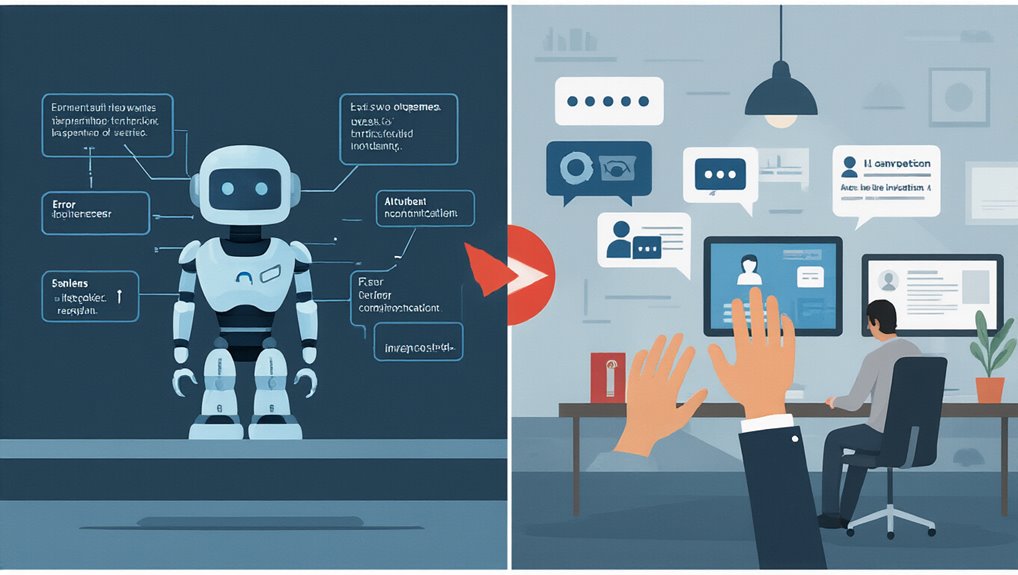While organizations continue to rely on traditional data entry methods, manual data integration is proving increasingly inadequate in today’s data-driven business environment. The statistics paint a sobering picture: manual data entry carries an approximate 1% error rate that cascades through interconnected systems, compounding exponentially as data moves through the organization. These seemingly small errors trigger disastrous chain reactions affecting everything from marketing campaigns to sales forecasts and analytics reports.
In today’s data-driven world, manual integration’s 1% error rate triggers a catastrophic chain reaction across entire business ecosystems.
The productivity drain is equally alarming. Employees spend roughly 45% of their time on tasks that could be automated, while teams waste an average of 12 hours per week just searching for information—costing companies $7.8 million annually. Despite these clear inefficiencies, many organizations cling to manual processes, underestimating automation‘s value while overestimating implementation complexity.
Data silos represent another critical roadblock, with 95% of organizations struggling to integrate data across systems. Each department operates as its isolated island with separate CRM, analytics, and ERP systems. This fragmentation has become the single biggest barrier to automation and AI implementation, cited by 80% of companies. Modern Data Management Platforms can address these challenges by centralizing data collection, organization, and activation while maintaining user anonymity and regulatory compliance. Organizations can significantly improve integration by choosing scalable, modern tools capable of handling large volumes while maintaining performance. Eliminating manual order entry can reduce processing errors by up to 90% reduction, dramatically improving data quality across departments.
The failure rates for integration projects are staggering:
- 85% of large-scale data projects fail
- 84% of integration efforts fail or partially fail
- Up to 75% of all EDI migrations fail
- 70% of digital transformation projects fail due to poor integration
Compliance risks escalate with manual processes as well. Continuously evolving regulatory requirements like CCPA and GDPR make it increasingly difficult for manual processes to maintain compliance, with only 10% of organizations reporting being “very confident” in their metadata and catalogs.
Automation offers a clear path forward. By implementing automated data integration systems, you can dramatically reduce error rates, free staff from tedious manual tasks, break down data silos, and ensure consistent compliance with regulatory requirements.
The most successful organizations recognize that automation isn’t just about efficiency—it’s about creating the foundation for data-driven growth that manual processes simply cannot support.









